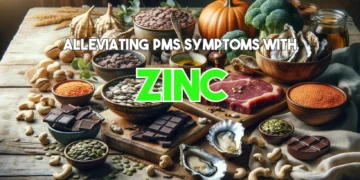A study conducted using data from the US National Health and Nutrition Examination Survey revealed a compelling connection between sexual activity and lower all-cause mortality.
The study found that participants with higher sexual activity frequency had a lower risk of all-cause death during the follow-up period. The prevalence of sexual activity remained stable over time among US adults aged 20-59 years. These findings suggest that sexual activity may contribute to longevity and overall health.
Key Takeaways:
- Higher sexual activity frequency is associated with a lower risk of all-cause mortality.
- The prevalence of sexual activity is stable among US adults aged 20-59 years.
- Sexual activity may contribute to longevity and overall health.
Prevalence and Trends of Sexual Activity in the United States
The study examined the prevalence and trends of sexual activity in the United States using data from the National Health and Nutrition Examination Survey.
The results showed that 71.7% of US adults aged 20-59 engaged in sexual activity at least 12 times per year (monthly), indicating a high prevalence of sexual activity among the population.
However, it is noteworthy that only 36.1% engaged in sexual activity at least 52 times per year (weekly), suggesting a smaller percentage of individuals with a higher frequency of sexual activity.
The prevalence of sexual activity remained stable over time among different age groups, indicating that sexual activity is a consistent part of adult life in the United States. This finding highlights the importance of understanding sexual frequency norms in US society and their impact on individuals’ health and well-being.
Prevalence of Sexual Activity Frequency in the United States
| Sexual Activity Frequency | Percentage of US Adults Aged 20-59 |
|---|---|
| Monthly (at least 12 times per year) | 71.7% |
| Weekly (at least 52 times per year) | 36.1% |
This table presents the prevalence of sexual activity frequency among US adults aged 20-59. It demonstrates that the majority of individuals engage in sexual activity at least once a month.
However, a smaller proportion of individuals engage in sexual activity on a weekly basis, suggesting a lower frequency for a significant portion of the population.
Understanding the prevalence and trends of sexual activity in the United States is crucial for comprehending its impact on individuals’ health and well-being.
It provides valuable insights into sexual behavior norms and patterns, allowing researchers and healthcare professionals to develop targeted interventions and support systems to improve sexual health nationwide.
The image above depicts a visual representation of the prevalence and trends of sexual activity in the United States. It serves as a visual aid to further illustrate the findings discussed in this section.
Association Between Sexual Activity and Mortality Risk
The study examined the association between sexual activity and mortality risk, with a focus on all-cause and cause-specific mortality. The findings revealed an intriguing connection between sexual activity frequency and the risk of death from various causes.
“Participants with higher sexual activity frequency had a lower risk of all-cause death in a dose-response manner during the follow-up period.”
The study utilized multivariable-adjusted hazard ratios to assess the relationship between sexual activity and mortality risk.
The results demonstrated that individuals who engaged in sexual activity at least 52 times per year had a significantly lower risk of all-cause mortality, cancer mortality, and other-cause mortality compared to those who had sex 0-1 time per year.
Decreased Mortality Risk:
The study’s findings suggest that sexual activity may play a role in reducing mortality risk, supporting the hypothesis that regular sexual activity contributes to better overall health and longevity.
- Participants who had sex at least 52 times per year had a lower risk of all-cause mortality.
- Participants who engaged in sexual activity at this frequency also had a decreased risk of cancer mortality.
- Furthermore, individuals with higher sexual activity frequency exhibited a lower risk of mortality from other causes, highlighting the potential broad health benefits of sexual activity.
These associations were observed in a dose-response manner, indicating that the more frequently sexual activity occurred, the greater the reduction in mortality risk.
Implications and Future Research:
Understanding the association between sexual activity and mortality risk opens up avenues for further research and potentially informs healthcare interventions. While this study provides valuable insights, it is important to consider its limitations, such as its observational nature, which prevents establishing causality.
To build upon this research, future studies should prioritize longitudinal investigations and incorporate diverse populations to explore the relationship between sexual activity and mortality risk more comprehensively.
Additionally, investigating the mechanisms underlying this association and the impact of sexual activity on specific health conditions would contribute to a deeper understanding of these findings.

Overall, this study suggests that engaging in regular sexual activity may have a beneficial impact on mortality risk. By recognizing sexual activity as a potential health indicator, individuals and healthcare professionals can consider it as part of a holistic approach to longevity and well-being.
Sexual Activity and Cancer Mortality
The association between sexual activity and cancer mortality was extensively examined in the study. The findings revealed that individuals with higher sexual activity frequency experienced a significantly lower risk of cancer-related deaths during the follow-up period.
The multivariable-adjusted hazard ratio analysis confirmed that participants who engaged in sexual activity at least 52 times per year had a substantially lower risk of cancer mortality compared to those who had sex only 0-1 time per year.
This study sheds light on the potential benefits of sexual activity in reducing the risk of cancer-related deaths. By establishing a clear correlation between sexual activity frequency and cancer mortality, it provides valuable insights into the role that sexual activity may play in promoting overall health and well-being.
It is important to note that this association between sexual activity and cancer mortality demonstrates a dose-response relationship, suggesting that higher frequency of sexual activity correlates with greater risk reduction.
These findings highlight the potential benefits of sexual activity in reducing the risk of cancer-related deaths.
Summary of Findings
Table: Cancer Mortality Risk Based on Sexual Activity Frequency
| Sexual Activity Frequency | Risk of Cancer Mortality |
|---|---|
| 0-1 time per year | Higher |
| At least 52 times per year | Significantly Lower |
Note: The table above summarizes the relationship between sexual activity frequency and the risk of cancer mortality. Participants who engaged in sexual activity at least 52 times per year demonstrated a significantly lower risk of cancer-related deaths compared to those who had sex only 0-1 time per year.
Implications and Further Research
The findings of this study provide compelling evidence for the potential role of sexual activity in reducing the risk of cancer mortality. However, further research is needed to better understand the mechanisms underlying this association and to explore the impact of sexual activity on specific types of cancer.
Understanding the relationship between sexual activity and cancer mortality can inform future interventions and strategies for cancer prevention. By promoting sexual health and activity, individuals may potentially reduce their risk of developing cancer and improve their overall health outcomes.
Sexual Activity and Cardiovascular Disease Mortality
In addition to investigating the association between sexual activity and overall mortality, the study also examined its relationship with cardiovascular disease mortality.
While the results did not reveal a significant association between sexual activity and cardiovascular disease mortality, there were noteworthy findings regarding the frequency of sexual activity and its potential impact on cardiovascular health.
The study found that participants who engaged in sexual activity at least 52 times per year had a slightly lower risk of cardiovascular disease mortality compared to those who had sex 0-1 time per year. Although the difference may not be statistically significant, it suggests a possible trend that warrants further investigation.
Cardiovascular disease is a leading cause of death worldwide, and understanding factors that may influence its risk and prevention is crucial. While sexual activity alone may not have a substantial effect on cardiovascular disease mortality, it is important to consider the broader context of overall cardiovascular health.
Regular physical activity, a healthy diet, and positive lifestyle choices are known to be key contributors to cardiovascular well-being. Sexual activity can be seen as one component of a holistic approach to maintaining a healthy heart.
Further research is needed to better understand the complex relationship between sexual activity and cardiovascular health. Longitudinal studies, examining larger and more diverse populations, can provide a clearer picture of the potential role sexual activity plays in preventing or reducing the risk of cardiovascular disease mortality.
Summary of Findings on Sexual Activity and Cardiovascular Disease Mortality
| Sexual Activity Frequency | Risk of Cardiovascular Disease Mortality |
|---|---|
| 0-1 time per year | Slightly higher risk |
| 52+ times per year | Slightly lower risk |
This table provides an overview of the study’s findings regarding sexual activity frequency and its association with cardiovascular disease mortality. It is important to note that the differences in risk are slight and may not be statistically significant. However, these findings suggest a potential trend that merits further research.

This image visually emphasizes the topic of sexual activity and cardiovascular disease mortality. While the visual representation serves to capture the readers’ attention, it is important to consider the textual content in the article to provide a comprehensive understanding of the topic.
Sexual Activity as a Health Indicator
The study suggests that sexual activity can serve as a health indicator of all-cause and cancer mortality in US middle-aged adults. Higher sexual activity frequency was associated with a lower risk of mortality, indicating that individuals who engage in regular sexual activity may have better overall health.
These findings highlight the potential role of sexual activity in assessing and improving longevity.
In a study conducted using data from the US National Health and Nutrition Examination Survey, researchers found that participants with a higher frequency of sexual activity had a decreased risk of all-cause death during the follow-up period.
This association suggests that sexual activity may have significant health benefits beyond its pleasurable aspects.
The link between sexual activity and mortality risk is a valuable area of research that sheds light on the importance of maintaining a healthy and active sex life. By examining sexual activity as a health indicator, healthcare professionals may gain insights into an individual’s overall well-being and potential mortality risk.
While the exact mechanisms underlying the relationship between sexual activity and health outcomes are not fully understood, several theories have been proposed.
One hypothesis is that regular sexual activity may contribute to better cardiovascular health, as it can increase heart rate and blood flow, in addition to providing stress reduction and improved emotional well-being.
Furthermore, sexual activity has been shown to stimulate the release of endorphins and other feel-good hormones, which can enhance immune function and overall resilience. This may explain why individuals with a higher sexual activity frequency exhibit a lower risk of mortality.
Physical and Emotional Intimacy
Engaging in sexual activity involves physical and emotional intimacy, which can positively impact mental health and overall well-being. Intimate moments shared with a partner can foster a sense of connection, trust, and mutual support, contributing to a healthier and more satisfying relationship.
It is important to note that sexual activity is not solely reserved for younger adults. The study findings encompassed participants aged 20-59 years, highlighting the relevance of sexual activity as a health indicator across various age groups.
As with any research, it is essential to consider individual differences and to consult with healthcare professionals for personalized advice. However, these findings suggest that sexual activity may hold insights into an individual’s health and mortality risk, warranting further exploration in future studies.
Limitations and Future Research
The study on the association between sexual activity and mortality risk has shed light on the potential health benefits of regular sexual activity. However, it is important to acknowledge the limitations of the study and the need for further research to expand our understanding of this relationship.
Limitations of the Study
- The study was observational in nature, which means that it cannot establish causality. While it revealed an association between sexual activity and lower mortality risk, other factors could have influenced the results.
- The study relied on self-reported data, which could be subject to recall bias or social desirability bias. Participants may have underreported or overreported their sexual activity, leading to inaccuracies in the findings.
- The study focused on middle-aged adults in the United States, limiting the generalizability of the findings to other age groups or populations. Future research should include diverse populations to obtain a more comprehensive understanding of the relationship between sexual activity and mortality risk.
- The study did not investigate the influence of sexual activity on specific health conditions or diseases. Future research should explore the role of sexual activity in conditions such as cardiovascular disease, cancer, and mental health disorders to provide a more nuanced understanding of the potential health benefits.
Future Research Directions
Despite the study’s limitations, it serves as a starting point for further investigation into the relationship between sexual activity and mortality risk. Future research should prioritize the following areas to advance our knowledge:
- Longitudinal studies: Conducting longitudinal studies would help establish a causal relationship between sexual activity and mortality risk. By following participants over a longer period, researchers can better understand how changes in sexual activity frequency impact mortality outcomes.
- Mechanisms underlying the association: Investigating the physiological and psychological mechanisms underlying the association between sexual activity and lower mortality rates is crucial. Understanding how sexual activity influences overall health and mortality risk can help guide interventions and preventive measures.
- Specific health conditions: Examining the role of sexual activity in specific health conditions, such as cardiovascular disease, cancer, and mental health disorders, would provide valuable insights into the potential benefits of sexual activity for disease prevention and management.
- Diverse populations: Including diverse populations in future studies would enhance the generalizability of the findings and help identify potential disparities in the relationship between sexual activity and mortality risk across different demographic groups.
By addressing these limitations and pursuing these avenues of research, we can continue to expand our understanding of the health benefits of sexual activity and its impact on mortality risk.
Conclusion
The study provides compelling evidence linking sexual activity to lower all-cause and cause-specific mortality. The findings suggest that individuals who engage in higher sexual activity frequency may experience a decreased risk of all-cause and cancer mortality.
These results underscore the potential health benefits of sexual activity and its role in contributing to longer life and improved overall health.
However, it is important to note that this study is observational in nature and cannot establish causality. Further research is needed to better understand the mechanisms underlying the relationship between sexual activity and lower mortality rates.
Additionally, future studies should explore the impact of sexual activity on specific health conditions and include diverse populations to ensure comprehensive findings.
Despite these limitations, the study adds to the growing body of evidence supporting the health benefits of sexual activity. It highlights the potential of sexual activity as a positive health indicator and emphasizes the importance of maintaining a healthy and fulfilling sexual life.
As we strive for better health and longevity, prioritizing sexual activity as part of a holistic approach to well-being may be beneficial.
FAQ
Is there a link between sexual activity and lower mortality rates?
Yes, a study found that participants with higher sexual activity frequency had a lower risk of all-cause death during the follow-up period.
What is the prevalence and trends of sexual activity in the United States?
According to the study, 71.7% of US adults aged 20-59 engaged in sexual activity at least 12 times per year (monthly), while only 36.1% engaged in sexual activity at least 52 times per year (weekly).
What is the association between sexual activity and mortality risk?
The study showed that participants who had sex at least 52 times per year had a significantly lower risk of all-cause, cancer, and other-cause mortality compared to those who had sex 0-1 time per year.
How does sexual activity impact cancer mortality?
The study revealed that participants who had sex at least 52 times per year had a significantly lower risk of cancer mortality during the follow-up period.
Does sexual activity affect cardiovascular disease mortality?
While the results did not show a significant association between sexual activity and cardiovascular disease mortality, participants who had sex at least 52 times per year had a slightly lower risk of cardiovascular disease mortality.
Can sexual activity serve as a health indicator?
Yes, higher sexual activity frequency was associated with a lower risk of all-cause and cancer mortality, suggesting that individuals who engage in regular sexual activity may have better overall health.
What are the limitations of the study and what future research is needed?
The study has limitations due to its observational nature. Future research should focus on longitudinal studies and include diverse populations to further understand the relationship between sexual activity and mortality risk.
What are the health benefits of sexual activity?
Sexual activity has been linked to lower mortality rates and may contribute to longer life and improved overall health.



























